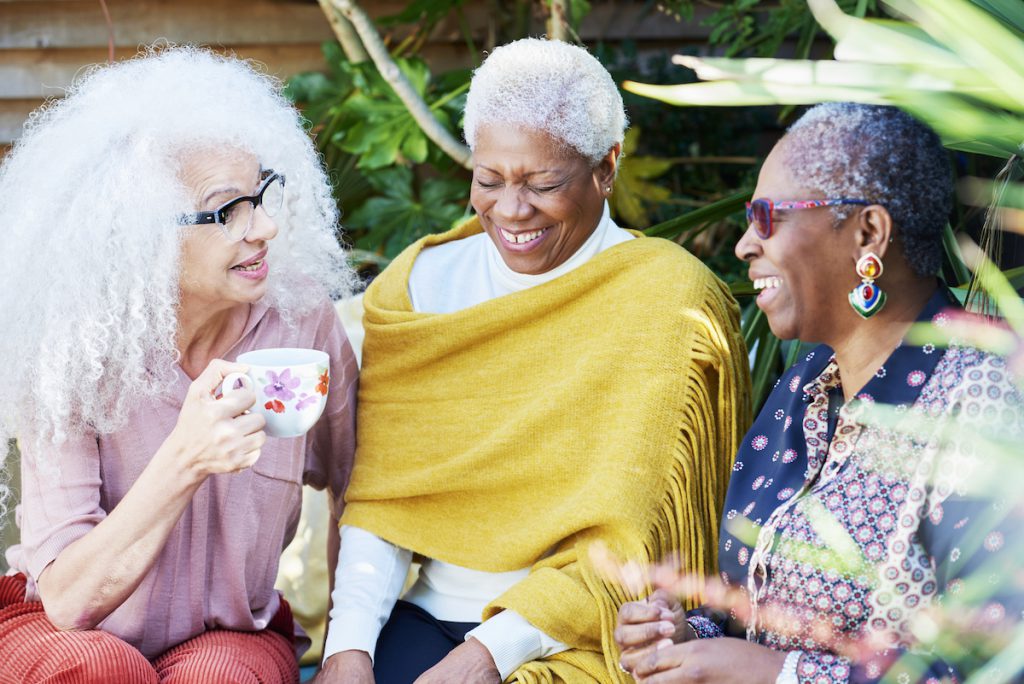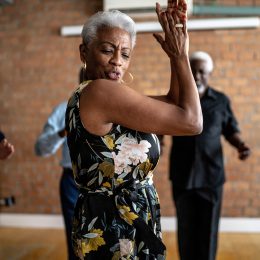5 Smart Ways to Check in on Your Independence
Wondering if your health is on track to age in place? Here’s how to discover for yourself how you’re doing on your own.

It’s nearly inevitable that your adult kids will start parenting you a bit as you grow older. They love you — and want you to be safe — but if they frequently express concerns about your independence, it can feel a little insulting. There’s a good chance that you’re managing everything at home just fine on your own.
“Most people want to age in place,” says Dianne Stone. She is the associate director of network development and engagement at the National Council on Aging (NCOA). “And by that, I mean in the place of their choosing and to live independently for as long as possible.”
Maintaining good health and autonomy often comes down to savvy planning and a fair amount of self-awareness. Experts say that a big part of healthy aging is anticipating future needs.
“From my personal and my professional experience, I know that people need to plan for their own aid, they need to engage their family members in those discussions, and they need to see what exists at the community level,” says Sandy Markwood, the CEO of the national advocacy group USAging.
Want to age in the home you love? Here are some questions, tools and other information you can use to check in to see how you’re doing.
Stay active, have fun, get fit — with SilverSneakers! Classes and events are happening right now at participating gyms, online through SilverSneakers LIVE, and at community centers near you. Activate your free online account to get started.
1. How are your small-talk skills?
Brief social exchanges with strangers are necessary to get home repairs arranged or ask for what you need at the pharmacy. If you’re unable to hold up your end of these conversations, you’re more vulnerable than those who can.
Dynamic communication requires the use of many parts of your brain, and fortunately, shooting the breeze is relatively easy to practice. According to research published in Social Psychological and Personality Science, short, 10-minute conversations can help boost the brain’s executive function, which is your ability to plan, focus your attention, and manage multiple tasks.
What’s more, these seemingly simple interactions can help keep you sharp and protect yourself from scammers who target older adults.
Find out how you’re doing: Find Your Place: The Cognition Screen for Seniors
Recommended reading: 5 Surprising Reasons to Visit Your Local Senior Center
2. How well are you navigating the stairs?
Stair climbing isn’t a thrill for any of us, but it gets even harder as we grow older. Balance issues can be a problem at this age, and that can be caused by a lack of lower-body strength. It’s much easier to take a tumble if you’re weak and unsteady on your feet.
Strength training and preserving strength is very important for independent living — it’s crucial to help slow age-related muscle loss. Good nutrition matters too. Seniors should also eat more protein every day to help maintain and build their muscle mass, says Debbie Petitpain, R.D. She works with older adults to help reduce the risk of age-related nutritional deficits and is a spokesperson for the Academy for Nutrition and Dietetics.
Lower-body strength helps you maintain stability, avoid falls — and climb the stairs to your bedroom. Assessing the power that you pack in this half of your body can also help you understand your current level of overall strength. And experts agree that people over 65 should be strength training at least twice a week.
Find out how you’re doing: Find Your Place: The Lower-Body Strength Test for Seniors
Recommended exercises: 4 Stepup Variations That Will Strengthen Your Lower Body
3. How comfortable are you with driving?
There’s little question that Americans love their cars, and for many people in the U.S., the ability to drive is essential for independent living. But our sight and reflexes wane as we age, leaving us at a higher risk for accidents. According to the Centers for Disease Control and Prevention, thousands of older adults are injured or killed in car accidents every year.
The non-profit organization AAA states that seniors are among the safest drivers on the road — obeying speed limits and wearing seat belts, for example — but age-related factors do pose safety concerns.
A loss of peripheral vision, which is what you can see without moving your head, is part of the problem. It helps you see road signs, hazards and other cars, according to one recent study. While not everyone will experience this age-related vision change, your risks for this issue tends to increase after age 60.
Reaction time is another factor. One of AAA’s tips for older drivers is, in fact, to exercise regularly to maintain and improve muscle strength and joint flexibility. Staying mentally stimulated is another. If you’re concerned about your driving skills, make an appointment with a state-licensed and trained driving instructor.
Find out how you’re doing: Find Your Place: The Eye Health Screen for Seniors
Recommended workout: Better Balance Challenge: 10-Minute Reaction Balance Training
4. How often are you down in the dumps?
Everyone has a bad day now and then, but it’s an independence issue if you feel that way all the time. More than two million of the 34 million Americans age 65 and older have some form of depression, according to Mental Health America. Clinical depression impacts your ability to perform essential daily functions.
Your risk for developing depression rises, not so much with age, but with the diseases common in your age group. Older adults face higher risks for heart disease, stroke and cancer, all of which tend to happen alongside this mood disorder.
Subscribe to our newsletter
It's quick and easy. You could be one of the 13 million people who are eligible.
Already a member? Click to discover our 15,000+ participating locations.
Follow Us
What’s more, depression is often unrecognized or underdiagnosed in older adults, partially because symptoms overlap with other age-related conditions, according to the CDC.
Find out how you’re doing: Find Your Place: The Depression Screen
Recommended reading: What Exercise Can and Can’t Do for Depression and Anxiety
5. How sharp is your memory?
Forgetting things is a common side effect of growing older. As many as 18% of Americans over age 65 may have mild cognitive impairment, which is an early stage of memory loss and a decline in thinking skills. And not remembering to turn off the stove or lock your front door can put your safety at risk.
If you’ve noticed some worrisome slips, don’t hesitate to talk to your doctor about it. The beginning stages of memory loss can be a window of opportunity for treatments and lifestyle changes that can slow progression. As neuroscientists learn more and about the brain and memory every day, it’s becoming more clear that cognitive problems are much more reversible than once believed.
Find out how you’re doing: Should you ask your doctor about cognitive testing?
Checking in on Your Results
If you aced all of these tests, congratulations! Maybe your kids can worry a little less about you now. You can continue to stay self-aware by using these assessments regularly.
But they are not a substitute for a professional opinion. If you are concerned about any or all of your scores, talk to your healthcare provider to see if further or formal testing is warranted.
See our sources:
Older adults and traffic accidents: Centers for Disease Control and Prevention
Senior driver safety and mobility: AAA
Peripheral vision: Psychonomic Bulletin & Review
Casual conversation and executive functioning: Social Psychological and Personality Science Depression statistics: Mental Health America
Depression risk factors: National Institute on Aging
Mild cognitive impairment: Alzheimers.gov
Activate Your FREE SilverSneakers Online Account
Get hundreds of free SilverSneakers On-Demand videos and stay in touch with us by creating your free online account. You don’t have to be a SilverSneakers member to get on-demand workout videos, health and fitness tips from SilverSneakers, and more.
SilverSneakers members can go to thousands of nationwide gyms and fitness locations, plus take SilverSneakers LIVE online classes led by specially trained instructors and designed for all fitness levels and abilities – at no additional cost. If you have a Medicare Advantage plan, it may include SilverSneakers. Check your eligibility here.
Already a member? Get your SilverSneakers member ID, search for locations near you, and all the health and wellness resources you need by logging in to your online member account here.




